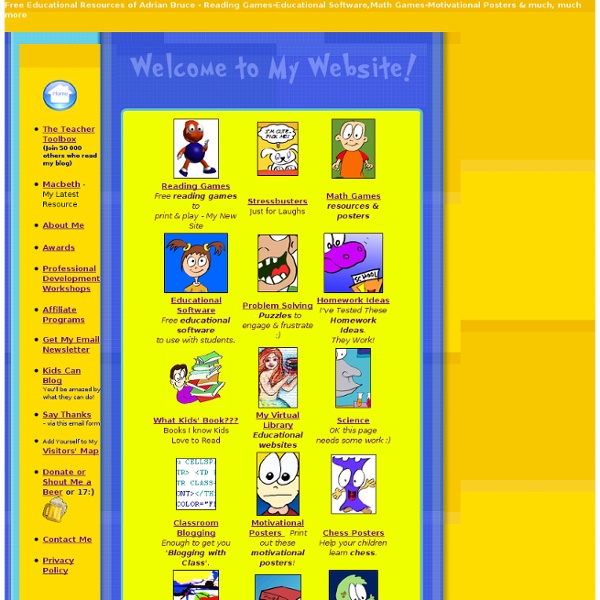



Classroom 2.0 All About Adolescent Literacy Bloomin' Apps This page gathers all of the Bloomin' Apps projects in one place.Each image has clickable hotspots and includes suggestions for iPad, Android, Google and online tools and applications to support each of the levels of Bloom's Revised Taxonomy.I have created a page to allow you to share your favorite online tool, iOS, or Android app with others. Cogs of the Cognitive Processes I began to think about the triangular shape of Bloom's Taxonomy and realized I thought of it a bit differently.Since the cognitive processes are meant to be used when necessary, and any learner goes in and out of the each level as they acquire new content and turn it into knowledge, I created a different type of image that showcased my thoughts about Bloom's more meaningfully.Here is my visual which showcases the interlocking nature of the cognitive processes or, simply, the "Cogs of the Cognitive Processes". IPAD APPS TO SUPPORT BLOOM'S REVISED TAXONOMYassembled by Kathy Schrock Bloom's and SAMR: My thoughts
Learning Disabilities in Children: Symptoms, Types, and Testing What are learning disabilities? Learning disabilities, or learning disorders, are an umbrella term for a wide variety of learning problems. A learning disability is not a problem with intelligence or motivation. Simply put, children and adults with learning disabilities see, hear, and understand things differently. Children with learning disabilities can, and do, succeed It can be tough to face the possibility that your child has a learning disorder. But the important thing to remember is that most kids with learning disabilities are just as smart as everyone else. Signs and symptoms of learning disabilities and disorders If you're worried, don't wait If you suspect that your child's learning difficulties may require special assistance, please do not delay in finding support. Learning disabilities look very different from one child to another. It’s not always easy to identify learning disabilities. The following checklist lists some common red flags for learning disorders. Related Articles
New ‘Dyslexie’ font helps dyslexics read better AFP/ Those in a study of the font say it improves reading accuracy. A graphic designer from the Netherlands, Christian Boer, has developed a new font to aid his dyslexia. The font, called Dyslexie, isn’t the first of its kind, but according to Scientific American in an article published Wednesday, “it has received much fanfare from sufferers.” Boer first designing his font in 2008 while studying at the University of Twente in the Netherlands, and in 2010 a fellow student conducted an independent study on the font as part of a master s thesis project. Participants in the study said the font improved their reading accuracy and allowed them to read for longer periods of time before tiring. According to Scientific American, the font tweaks letters of the alphabet that are commonly misread, such as d and m, to make them easier to recognize. Some other fonts designed to aid dyslexic readers are Read Regular, Lexia Readable, Tiresias and Sassoon.
The Florida Center for Reading Research 4Teachers : Main Page Tagxedo - Word Cloud with Styles Autism News and Resources Developing Reading skills There is always a debate about teaching reading at F.E level to students with a learning disability(i.e teach them to use the skills they already have rather than learning using phonics) If you do want to have a go at using phonics and teaching tricky words here are some links to help you: A guide from DFES Letters and Sounds guidance from Department of EducationAn introduction to synthetic phonics from dyslexics.org.uk An over view of how and when to introduce the sounds and words can be found at: Phonics Play . A contibutor to the TES website has listed all the key words in phase order TES High Frequency Words in phase order And here are a few resources for teaching phonics at the early stages. Phase 2 Decodable words Games for the interactive whiteboard from TES I board (now have to pay to access) covering letter sounds in phase 1 and 2 developing Grapheme Phoneme Correspondence mainly as, at, pat, sat, tap TES Letters and sounds phase 1 and 2 .
Apps in Education Study Skills Once you have established a schedule to study you need to get the most out of that time. Several things will help increase your effectiveness. As already mentioned, maintaining a regular schedule is one. Another is creating a comfortable environment for studying that is free of distractions. A. Generally all the material that you should know for an exam is presented in lecture or in your lab work. DO NOT take this to imply that you do not need to read the text. Note: Different instructors utilize textbook information to different degrees. If it is discussed in lecture it is important. There is no single "best" way to study. The following is a compilation of many of the techniques used by successful students to study. 1. read and highlight important sections of the reading (note: highlighting is like note taking, highlight only enough to remind yourself of the key information presented. if time is short - preview the material briefly to identify key terms and concepts. 2. 3. 4. 5. 6.